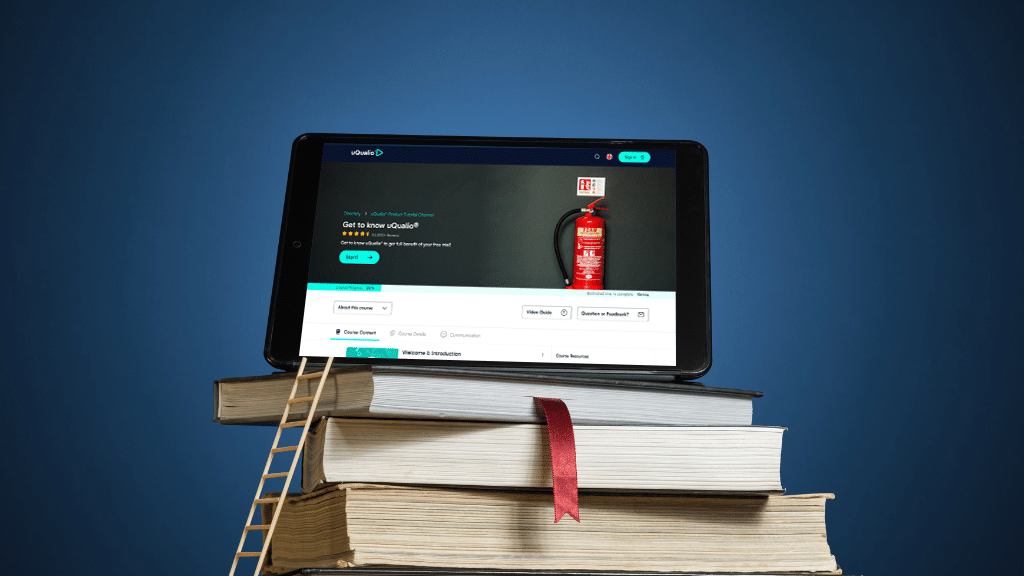In today’s rapidly evolving workplace landscape, the paradigm of learning and development has shifted significantly. The rise of remote work has necessitated a corresponding evolution in training methodologies. With the advent of digital learning, organizations are increasingly turning to different online training platforms for employees, including video eLearning software solutions, to facilitate learning in virtual environments. This article explores how these corporate eLearning platforms can be leveraged to maximize remote team engagement and enhance the learning experience for employees.
Understanding Remote Team Engagement: The Shift to Digital Learning
The transition to remote work has not just been about shifting physical locations. It necessitated the reimagining of how we approach learning and development in the modern workplace. Employees gathering in conference rooms for in-person training sessions have been replaced by the virtual expanse of digital learning platforms. This transformation, accelerated by global events and technological advancements, reflects a fundamental shift in our understanding of the nature of work and training.
Gone are the days of static presentations and one-size-fits-all training modules. In their place, we find a dynamic ecosystem of virtual classrooms and on-demand video learning modules. These digital learning platforms surely represent a convenience for remote teams. Additionally, they portray a strategic imperative for organizations seeking to remain agile and competitive in an increasingly digital landscape.

The Need for Flexibility, Accessibility, and Scalability
At the heart of this shift is the recognition of the need for flexibility, accessibility, and scalability in employee training programs. Traditional in-person training sessions can be effective in some contexts, However, they often struggle to accommodate the diverse needs and schedules of a modern workforce. The rigidity of fixed schedules and physical locations proved to be significant barriers to remote team engagement and participation. This particularly holds true for dispersed teams and remote workers.
Video eLearning Platforms as a Viable Solution
Enter video learning platforms. These versatile tools offer a myriad of benefits that extend far beyond the confines of traditional training methodologies. By leveraging the power of technology, organizations can transcend geographical boundaries and temporal constraints. This will ensure that learning opportunities are accessible to all, regardless of location or time zone.
Moreover, video training solutions provide a level of scalability that is simply unattainable with traditional training methods. Whether training a handful of employees or a global workforce, organizations can deploy online training modules with ease. This will help ensure consistency and quality across the board. This scalability streamlines the training process. Moreover, it enables organizations to adapt quickly to changing business needs and priorities.

Most importantly, digital learning platforms cater to the diverse learning styles and preferences of today’s workforce. From interactive multimedia presentations to self-paced modules, these microlearning platforms offer a range of options to suit every learner’s needs. Whether visual, auditory, or kinesthetic, employees can engage with content in a way that resonates with their individual learning styles. This will help maximize retention and comprehension.
In embracing digital learning platforms, organizations are not merely embracing a trend; they are embracing a fundamental shift in how we approach training and skill development in the modern workplace. The benefits are clear: increased flexibility, accessibility, scalability, and engagement. As remote work continues to become the new norm, organizations that embrace these digital learning tools & solutions will be best positioned to thrive in the future.
Exploring Video Training Platforms: Tools for Enhanced Remote Learning
In today’s digital age, remote work has become the new norm. And, the demand for effective and engaging remote learning solutions has never been higher. In response to this need, video eLearning platforms have emerged as indispensable tools for organizations striving to enhance the remote learning experience.
Versatility
At the heart of these platforms lies their ability to deliver engaging and interactive learning experiences. Through features, such as live streaming, on-demand video content, and interactive quizzes, video training solutions cater to a diverse range of learning preferences and styles. This versatility ensures that learners remain actively engaged and motivated throughout the training process. This helps maximize the impact of the learning experience.
Flexibility
One of the key advantages of video eLearning platforms is their accessibility. With just a few clicks, learners can access a wealth of educational resources from anywhere with an active internet connection. This flexibility allows for learning to occur at the individual’s own pace and convenience. This aids in accommodating busy schedules and varying time zones. Whether it’s a quick refresher course during a lunch break or a deep dive into a new skill after hours, video training empowers learners to take control of their learning journey.
Comprehensive Libraries
Moreover, these platforms boast a vast repository of courses covering a wide range of topics. From technical skills like software and hardware training to soft skills development such as communication and leadership, learners have access to a comprehensive library of content curated by L&D teams. This diverse range of offerings ensures that employees at all levels of the organization can find relevant and valuable learning opportunities to support their professional growth and development.
Popular video4learning platforms are leading the charge in this space. They provide organizations with the tools they need to foster a culture of continuous learning and development. With features designed to promote virtual employee engagement, accessibility, and scalability, these platforms are helping organizations adapt to the challenges of remote work and thrive in the digital age.
Virtual training platforms represent a powerful solution for organizations looking to enhance the remote learning experience. By leveraging the latest technology and best practices in online education, these platforms enable organizations to deliver engaging, interactive, and impactful learning experiences that drive employee development and organizational success.

Strategies for Maximizing Remote Team Engagement
To optimize remote team engagement, organizations employ multifaceted strategies aimed at enhancing learner participation, comprehension, and retention. These strategies include:
- Microlearning Methodology: Utilizing bite-size, focused modules that cater to busy schedules and short attention spans, maximizing learning efficiency.
- Gamified Learning Platforms: Integrating gamification elements, like quizzes, badges, and certificates, into a learning experience. This makes them more enjoyable and engaging, incentivizing participation and motivating learners to achieve goals.
- Interactive Learning Modules: Incorporating interactive elements to encourage remote team engagement and knowledge application. This fosters a sense of immersion and interactivity.
- Personalized Learning Paths: Tailoring training programs to individual learning preferences and goals. This empowers employees to take ownership of their development journey.
- Feedback and Recognition Mechanisms: Providing timely feedback and recognition (micro-credentials) to reinforce positive learning behaviors. This boosts morale and encourages sustained engagement.

Leveraging Interactive Features: Engaging Learners in Virtual Settings
Interactive features are instrumental in captivating learners in virtual environments, fostering active participation, and enriching the learning experience. Video training platforms offer a suite of interactive tools, designed to engage learners and boost comprehension.
Polls and quizzes encourage learners to actively engage with the content, soliciting their opinions and promoting critical thinking. Text and email facilitate communication, allowing learners to ask questions, share insights, and engage in discussions with instructors.
Additionally, virtual training solutions empower trainers to monitor learners’ progress in real time, track participation, and assess comprehension. Through analytics dashboards and reporting tools, trainers can gain insights into learners’ engagement levels, identify areas for improvement, and tailor the learning experience to meet individual needs. Personalized feedback and guidance further enhance learning outcomes, enabling learners to address weaknesses, build on strengths, and achieve their full potential.
Incorporating interactive features into virtual training environments not only enhances learner engagement but also promotes active learning, collaboration, and knowledge retention. By leveraging these tools effectively, organizations can create dynamic and immersive learning experiences that empower learners to succeed in remote settings.

Measuring Success: Assessing the Impact of Video Training Platforms on Remote Learning
Measuring the success of remote training programs is not merely a matter of assessing completion rates or quiz scores. Rather, it entails a comprehensive evaluation of the impact of video eLearning platforms on remote learning outcomes. In this digital era, where data is abundant and insights are invaluable, organizations must leverage the built-in analytics tools offered by employee training platforms to gain a deeper understanding of their training initiatives’ effectiveness.
Learner Engagement
One of the primary metrics organizations can track is learner engagement. By analyzing metrics, such as the number of logins, time spent on the platform, and frequency of interactions with training materials, organizations can assess the level of engagement among remote learners. High levels of remote team engagement indicate that learners are actively participating in the training program and are invested in their own development.
Completion Rates
Completion rates are another key indicator of success. Organizations can track the percentage of learners who complete the training program or specific modules within a given timeframe. High completion rates suggest that the training content is relevant, engaging, and effectively delivered. Conversely, low completion rates may show that the content needs to be revised or that learners are facing obstacles in accessing or understanding the material.

Quiz Scores
Quiz scores provide insights into learners’ comprehension and retention of key concepts. By analyzing quiz scores, organizations can identify areas where learners may be struggling. Accordingly, they can adjust the training content or delivery methods. Additionally, quiz scores can help organizations assess the effectiveness of different training modules or learning pathways. This will allow them to refine their training programs over time.
Qualitative Feedback
In addition to quantitative metrics, organizations should also collect qualitative feedback from learners through a feedback loop. This helps capture learners’ satisfaction levels, learning preferences, and suggestions for improvement. Assessments can gather feedback on specific aspects of the training program. These may include the quality of instructional content, the effectiveness of interactive features, and/or the responsiveness of trainers. By asking for feedback directly from learners, organizations can gain valuable insights into the strengths and weaknesses of their training programs. This will allow them to make informed decisions to enhance the remote learning experience.
Assessing the impact of corporate training platforms on remote learning requires a holistic approach. It should consider both quantitative metrics and qualitative feedback. By leveraging analytics tools to track learner engagement, completion rates, and quiz scores, and collecting feedback from learners through surveys and assessments, organizations can gain valuable insights into the effectiveness of their training initiatives. This would help them make data-driven decisions to optimize the remote learning experience.

Conclusion
The transformative impact of employee video learning solutions on remote learning environments cannot be overstated. These platforms have revolutionized how organizations deliver training, enabling them to adapt and thrive in the era of remote work. By leveraging digital learning tools and solutions, organizations can unlock a multitude of benefits that extend far beyond traditional training methods.

Firstly, video training platforms offer unparalleled accessibility and flexibility, allowing employees to access training materials anytime, anywhere. This convenience accommodates the diverse needs and schedules of remote workers. It ensures that learning can occur at the individual’s own pace and convenience. Moreover, the scalability of these platforms enables organizations to reach dispersed teams and a global workforce. This fosters a culture of continuous learning and development on a global scale.
Furthermore, video training software enhances remote employee engagement and learning outcomes through interactive features and multimedia content. By incorporating elements such as quizzes and certificates, these platforms create immersive learning experiences that promote active participation and knowledge retention. Additionally, the gamification of learning content adds an extra layer of motivation. This encourages employees to engage with training materials and achieve their learning goals.

Importantly, investing in one of the popular online learning platforms is essential for driving organizational success in the digital age. In an increasingly competitive landscape, organizations that prioritize employee development gain a competitive edge by cultivating a skilled and adaptable workforce. By empowering employees to acquire new skills and knowledge effectively, organizations can enhance productivity, innovation, and overall performance.
As remote work continues to be the new norm, the importance of investing in digital learning solutions cannot be overstated. By embracing video training platforms like uQualio Video4Learning, organizations can maximize virtual employee engagement, enhance learning outcomes, and position themselves for success in the digital age. In this ever-evolving landscape, the ability to adapt and innovate in the realm of training and development is paramount. Thankfully, video training software offers a powerful tool for organizations to do just that.
Achieve Effective & Affordable Video Training
– uQualio is an award-winning, easy-to-use, all-in-one NextGen LMS software for any types of online video training.












